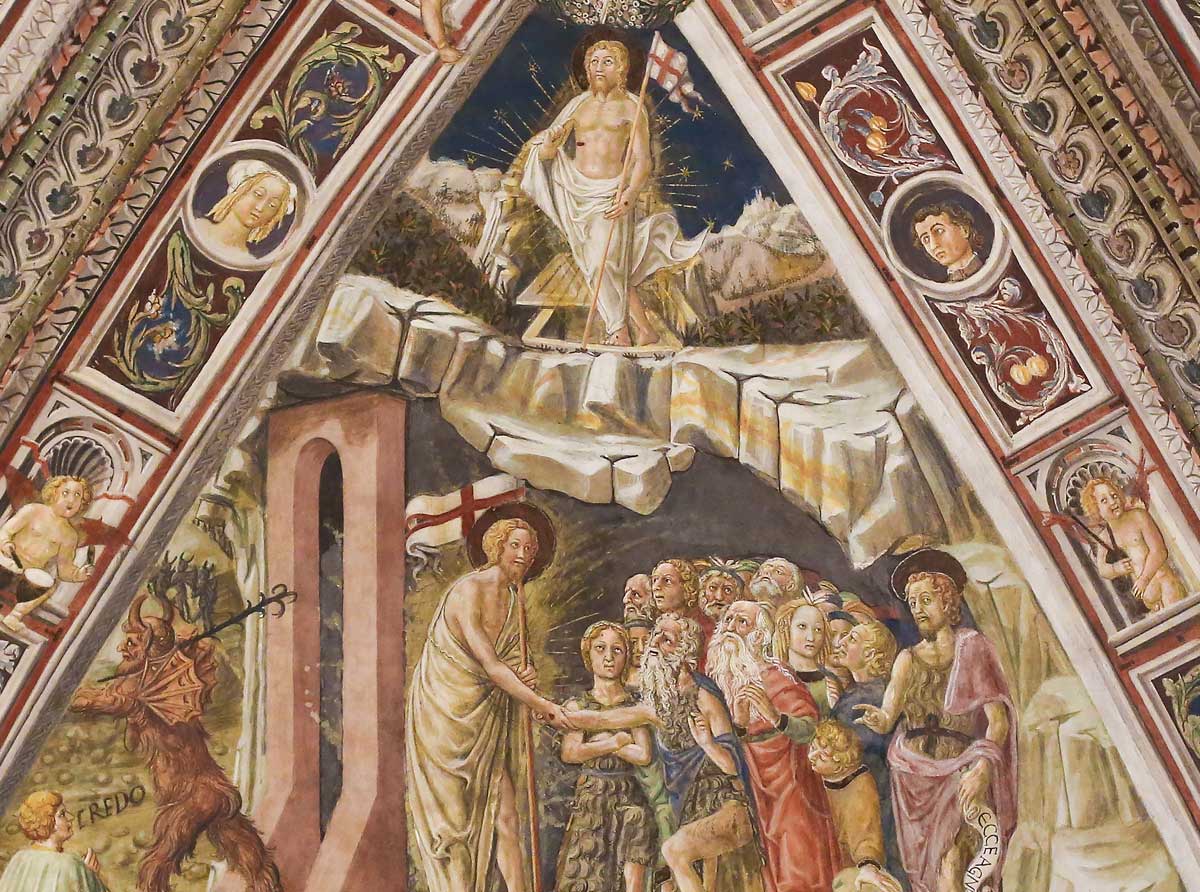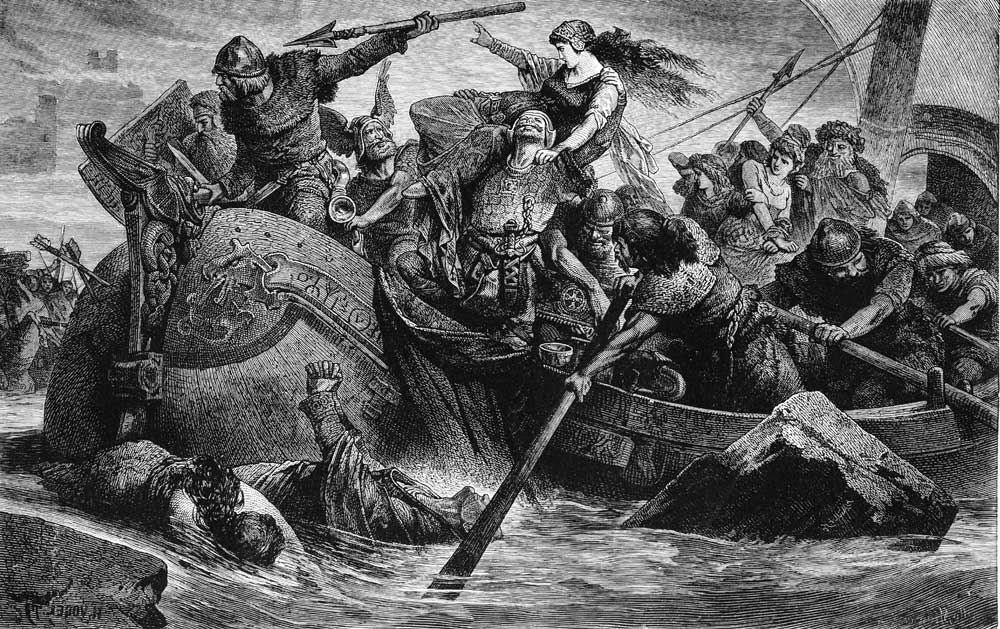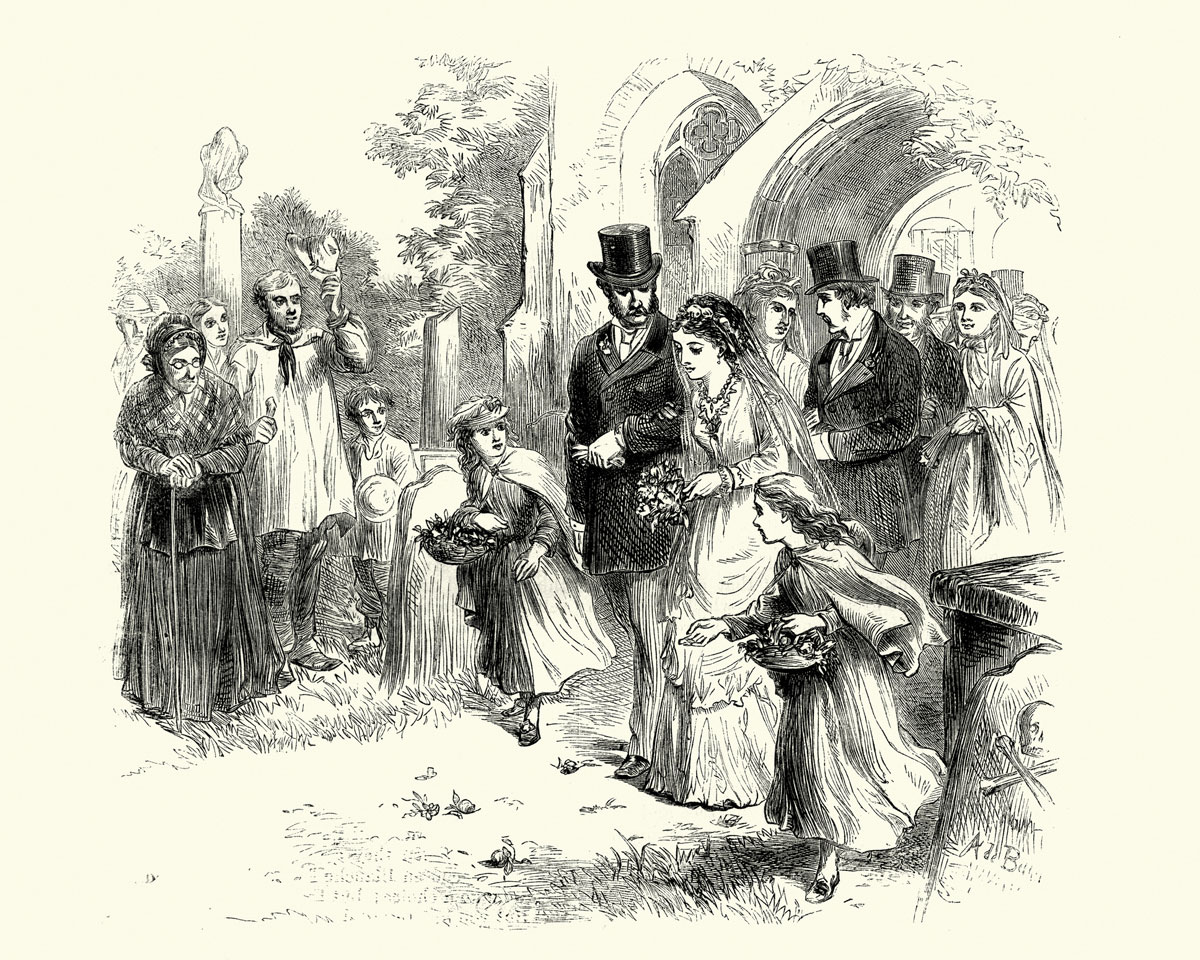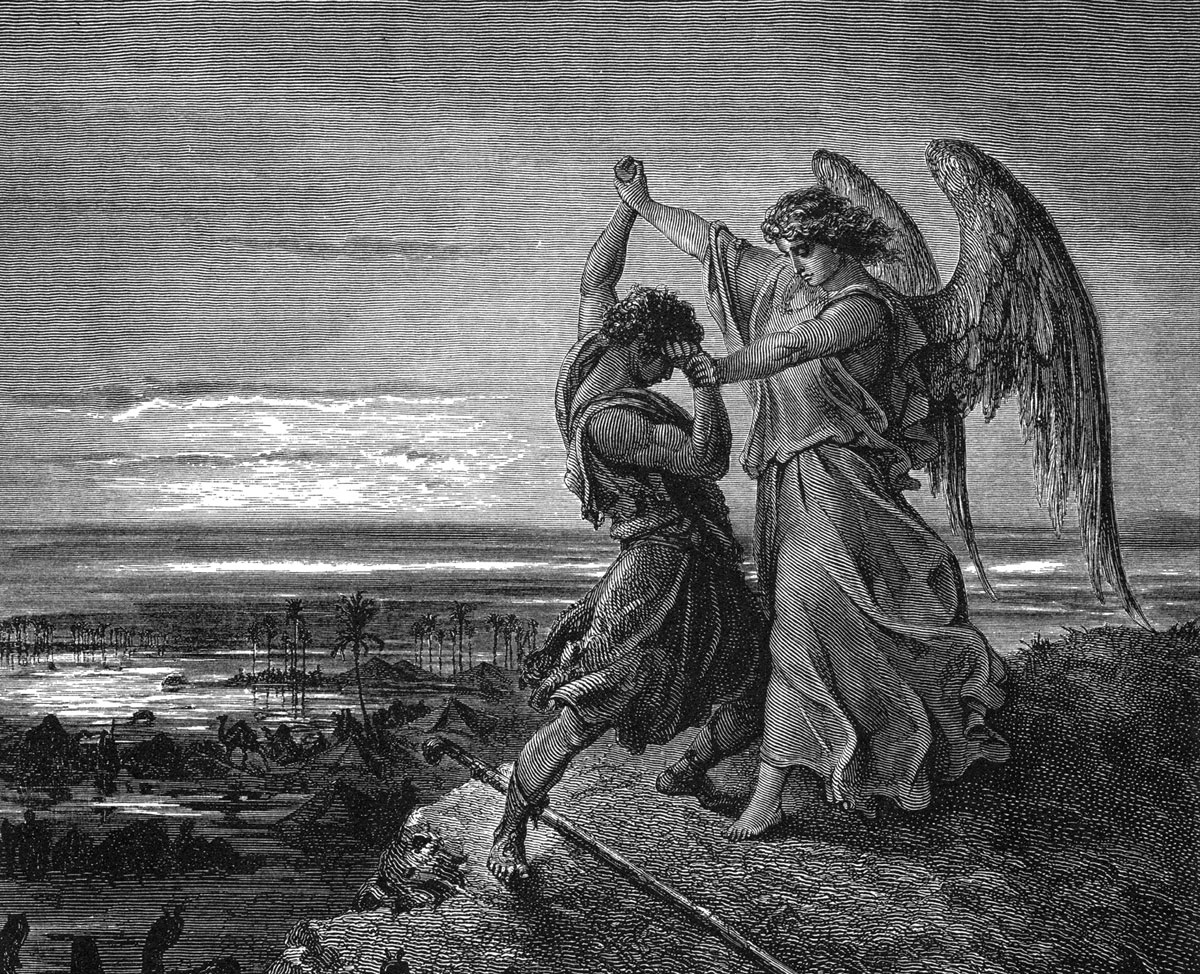The Transformed Relics of the Fall
Patrick Henry Reardon on the Fulfillment of History in Christ
While I confess that certain ascetical considerations, as well as constraints of time, have kept me from investigating—as perhaps I should—the theological roots of nudism, I would not be surprised to learn that this . . . well, phenomenon had something to do, in its origins, with the denial of Original Sin.
Doubtless this suspicion betrays my deep bias in the matter, but the Bible’s inclusion of clothing among the effects of Adam’s fall has always elicited my ready assent. Consequently, I have ever been disposed to associate nakedness with Rousseau’s view of man’s native innocence (in spite of his predilection for the Swiss in their frozen, snow-bound Alps).
But this consideration prompts a question. While we Christians most certainly do believe that all human beings share somehow in Adam’s fall, does not our gracious incorporation in the New Adam put a vast distance between ourselves and that Early Unpleasantness in the shadow of the paradisiacal Tree? Because of Christ, after all, God is not displeased with us. Though I must quote the text from memory, I recall a statement from the Council of Trent that “God hates nothing in those who have been reborn” (In renatis nihil odit Deus). Would any Christian disagree with this?
Why Clothing?
If this is so, however, why do we still wear clothing? I pose the query to open a theological discussion, obviously, not to throw down a challenge. I have no sympathy with the luckless Münster Anabaptists who persuaded themselves that those reborn in divine grace, thereby purged from Adam’s fall, need no longer bear the badge of Adam’s shame.
Given the premise, that is, that they were covered in the righteousness of Christ, they concluded that it was not necessary to be clothed in anything else. Alas for them, one recalls that their thesis was not widely shared by other Christians, and enthusiasm for radical Anabaptism in Münster rather quickly went cold.
But why? Just what is there about the Christian “feel for things” that disinclines us thus to display ourselves and claim thereby our prelapsarian heritage? Surely part of the answer to this question has to do with what are traditionally called “the remnants of sin,” that vestigial concupiscentia reminding us that even the justified are still offenders and that there is no man who liveth and sinneth not. Whatever their varying views of sin, all Christians believe something like this.
I want to suggest, nonetheless, that there is something more involved here. In considering this matter of our clothing, we will uncover, not only the psychological remnants of our ancient shame, but also an important aspect of our final glory. In time’s last hour, after all, when the voice of the archangel will trumpet us forth to the tribunal of the returning Christ, Holy Scripture gives us every reason to believe that we will still be wearing clothes. Even when the secrets of hearts will be revealed, the secrets of bodies will not.
We touch here, I submit, an important aspect of redemption itself. According to the imagery of the Bible, it involves a mysterious transformation of certain human experiences, especially cultural forms, that are associated in their origin, or at least their earliest historical expression, with the fall. That is to say, the new life in Christ includes his taking hold of and entirely remolding certain components of life that were not part of man’s original, innocent state. Even as he vanquishes sin, God does not simply undo or reverse the effects of man’s fall. Rather, he assumes these same effects, particularly cultural effects, into a larger expression of man’s ascent.
This truth is perhaps most readily exemplified in the phenomenon of clothing. As we have been reflecting, man’s sin created the problem of nakedness, and hence the solution of clothing, as described in the first book of the Bible. In the Bible’s last book, nonetheless, when man’s sin has in every last sense been conquered, we do not see the human race returned to the nakedness of its primitive, unfallen state.
The new man in Christ is clothed. We are described as wearing the white robes of glory. Grace, that is to say, does more than reverse the effects of sin; it transforms the effects of sin. Our new innocence in Christ is not to be identified as simply the earlier innocence of Adam. The effect of sin is not merely removed; it is assumed into a more ample transformation.
Other Cultural Forms
What is true of clothing is true likewise of other cultural forms. For example, the multitude of the world’s languages. According to Genesis 11, the multiplicity of the tongues is an expression of man’s rebellion. Thus, if we were to think of the Christian redemption simply in terms of restoration to an original form, we would expect man’s final state to involve a return to one language, the pure language in which Adam identified the nature of the animals, even prior to the creation of Eve.
However, this is not to be the case. In the new unity that the outpouring of the Holy Spirit brings to the historical experience of the human race, all the languages are included, from Parthians and the Medes to the visitors from Rome (Acts 2). Not only shall the saints be clad in linen robes before the Throne and in the sight of the Lamb, but they shall stand there distinguished by their own proper tongues (Revelation 7:9).
What is said of clothing and languages seems also true of what we may call “urban life.” God did not, at the beginning, place man in a city but in a garden. The city was fallen man’s idea. The first city was founded by the first murderer. Indeed, the first city was founded by the first fratricide, a fact that becomes the most ironical of archetypes.
The irony was certainly not lost on St. Augustine, who commented at some length on the manifest travesty that such a great enterprise of brotherly cooperation should be started by a man who killed his brother. In his lengthy The City of God, the saintly bishop of Hippo went on to compare Cain’s founding of the city of Enoch (cf. Genesis 4:17) to the founding of the city of Rome by Romulus, who had killed Remus, his own brother.
The second city mentioned in Holy Scripture, Babel, was likewise an expression of man’s rebellion against God. Holy Scripture, in speaking of such things, only calls attention to a fact that any of us can observe with minimum effort—that cities can be unpleasant, dangerous, and even violent places to live.
Still, when the Bible’s last book describes man’s return to Paradise, the latter is portrayed, not only as a garden (Revelation 22:2), but also as a city (21:2). Once again, a cultural form associated with the fall, from the very beginning, comes to embody the social dimensions of Christian redemption.
Much the same is to be said about instrumental music. Originally crafted by a descendent of Cain (cf. Genesis 4:21), musical instruments do not, perhaps, look very promising when first we learn of them. Moreover, there has often been something a bit problematic about such music, morally considered. When King Nebuchadnezzar employed “the sound of the horn, flute, harp, lyre, and psaltery, in symphony with all kinds of music” for his idolatrous purposes, it was not the last instance when instrumental music served to deflect men from the worship of the true God.
Yet, in fact, God rather early designated musical instruments as appropriate to his own worship in the tabernacle and the temple. And, once again, in the final book of the Bible we find heaven to be a place of resonating with the sounds of trumpet and harp.
Moreover, as an added irony, instrumental music is eventually limited so exclusively to heaven that the damned are forever deprived of such music! The sinful descendents of Cain, the very inventors of harp and flute, will never hear them again, inasmuch as the “sound of harpists, musicians, flutists, and trumpeters shall not be heard in you anymore” (Revelation 18:22). These things are now reserved for the blessed.
Reflecting on that final hour of perfected humanity, the last of the canonical psalms, Psalm 150, calls forth the voices of all these instruments for the eternal worship of the true God. He is forever to be praised with the voice of the trumpet, the psaltery and harp, timbrel and dance, strings and bells, loud-sounding cymbals, cymbals of jubilation. “Let every breath praise the Lord.”
Final Redemption
Our final redemption in Christ is the fulfillment of history, not its negation. The final consummation of grace embraces also the details of its elaboration within the dynamics of time. All of history, including sin itself, is subsumed into glory.
For many centuries the church of the West has heard this truth explicitly proclaimed on the night of the Easter vigil, when her herald deacon, standing before the new light of the Paschal candle and as though losing all sense of proportion and reason in the contemplation of its splendor, chants that glorious line of the Exultet: O felix culpa, quae talem et tantum meruit habere Redemptorem—“O happy failing, that deserved such and so great a Redeemer.”
Patrick Henry Reardon is pastor emeritus of All Saints Antiochian Orthodox Church in Chicago, Illinois, and the author of numerous books, including, most recently, Out of Step with God: Orthodox Christian Reflections on the Book of Numbers (Ancient Faith Publishing, 2019).
subscription options
Order
Print/Online Subscription

Get six issues (one year) of Touchstone PLUS full online access including pdf downloads for only $39.95. That's only $3.34 per month!
Order
Online Only
Subscription

Get a one-year full-access subscription to the Touchstone online archives for only $19.95. That's only $1.66 per month!
bulk subscriptions
Order Touchstone subscriptions in bulk and save $10 per sub! Each subscription includes 6 issues of Touchstone plus full online access to touchstonemag.com—including archives, videos, and pdf downloads of recent issues for only $29.95 each! Great for churches or study groups.
Transactions will be processed on a secure server.
more on history from the online archives

15.6—July/August 2002
Things Hidden Since the Beginning of the World
The Shape of Divine Providence & Human History by James Hitchcock
more from the online archives
calling all readers
Please Donate
"There are magazines worth reading but few worth saving . . . Touchstone is just such a magazine."
—Alice von Hildebrand
"Here we do not concede one square millimeter of territory to falsehood, folly, contemporary sentimentality, or fashion. We speak the truth, and let God be our judge. . . . Touchstone is the one committedly Christian conservative journal."
—Anthony Esolen, Touchstone senior editor












